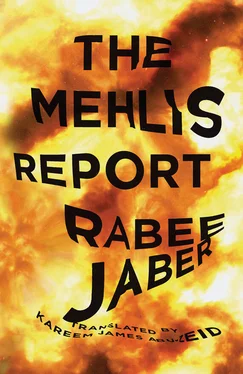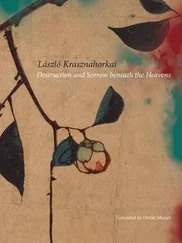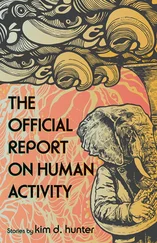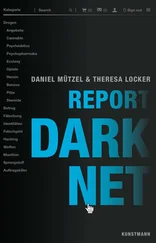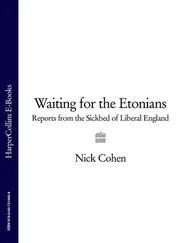Cecilia asks Saman if he remembers the pink house that used to be on Sassine Square — the one torn down a few years ago.
His memory fails him for a moment, but then returns. Saman says he does remember it. He’s surprised he could have forgotten that house — it was a house that caught the eye of any passerby. It was located in a space now occupied by a glass high-rise whose apartments have yet to be filled: between Chocolat Nora and Dunkin’ Donuts. How could you forget the pink house, Saman? How could you forget the rectangular garden with its red dirt and dried-up pine trees? How could you forget the concrete wall and the brown rust-covered railing? How could you forget the locked iron gate? When you were a boy, you used to leave the Sons of Neptune Club with your friend Salim Samaha, and the two of you would stop in front of the Abu Felix Shop and drink a soda and look at the house’s closed shutters covered in bird droppings; and the two of you would keep telling the same story over and over again; no, it wasn’t a story, it was nothing but some obscure piece of news one of you had once heard, yet it had become a part of your shared memory. “That house is haunted.” That’s why no one was willing to rent it. A family used to own it, but the family had died. They were kidnapped or killed by the shelling, or maybe they died of natural causes in their sleep, but people said the owner of the house had gone mad and killed his family members before killing himself. Saman didn’t know the story, and neither did his friend, but they both knew no one was willing to rent that locked-up house drowning in silence. The square was always brimming with lights and movement, and all the buildings were full of people, but that house remained silent and dark and alone in the shade of its black pine trees. When the autumn wind was blowing, the red dust would kick up onto the sidewalk outside the openwork iron gate. And when the winter wind stormed in, it blasted through the treetops and covered the outside stairs with a layer of dry wine-colored pine needles. They didn’t know all the details. But they did know that a man from the Deeb family had come with his wife and children and rented the house during the war. He’d been displaced, and could find nowhere else to stay. The neighborhood’s empty houses were all filled with displaced families and people who had left their homes on the other side of the city: the only place left was this locked-up house full of echoes, a house wrapped up in stories, its roof covered in cobwebs. But that man had lived in it for just three weeks. He didn’t even finish out the month of rent he had paid. He took his family and left.
The reader can visit the Shafiq Deeb and Sons shoe store near the Our Lady Church in Achrafieh to learn more about that house’s story. The reader can also ask the man who always sits in the midday heat selling lottery tickets and fortune cards by the wall of the Telephone and Postal Service building on Sassine Square. He sits there and eats with the shoeshine man. The two of them drink water they get from the building’s doorman, and from the LibanPost security guard. They eat and watch the businessmen entering the French-Lebanese Bank across the way.
Cecilia tells Saman that one of the girls who works at the Monoprix cash registers heard from a woman (a woman who was slowly emptying her cart as she worked out her bill on a tiny calculator she’d pulled out of a black handbag with a silver clasp) that the curse of the pink house — the house that had been torn down about five years ago, more or less (even we, the people of the neighborhood, have lost track of time and can no longer remember) — the woman said the curse of the pink house had fallen on the new high-rise building as well: that tower rises straight over Sassine Square and the ABC Mall, yet its apartments are still half empty! All the high-rises in this area sell out quickly, but this one is still little more than a blueprint. Saman knows this. The new building in the Nasra district, at the intersection near the Oil and Thyme restaurant, sold all twenty of its stories while they were still digging the foundation. The papers talk 24/7 about an economic crisis and the country’s abject poverty, and all the while people are buying up units before new buildings are even built! On the TV they said two percent of the population owns eighty percent of the country’s wealth.
That woman — who was slowly taking all the canned foods out of her cart, lining them up in front of the cashier, and meticulously keeping track of the bill on her tiny calculator — said a similar curse had once fallen on this place as well, a long time ago. Before it became the Monoprix, it was called the Abeela Supermarket. The Abeelas were an old family from Beirut. Saman Yarid had heard about them from his grandmother. Jacob Abeela, who had French roots and was the grandfather of the family, had come to Beirut from Acre. He was said to have been a doctor in Bonaparte’s army, and to have escaped its plague-stricken ranks and fled to Sidon. He was sick when he arrived in Sidon. A poor woman from the Zaydan family saved him, so he married her, and then brought her to Beirut. (Saman Yarid’s grandmother used to tell stories while she was embroidering the sheets or sewing covers by hand.) The Abeelas were an old family, and when this complex was built — these buildings on what they now call the “Beirut Hills” — there were some problems with one of the buildings: the foundation was cracked, or maybe the building was leaning a bit. A dispute broke out among the associates, and one of them sold his share to the rest.
All of this land was originally — about 150 years ago — the property of a single person. But the man divided it up into separate properties so his children would not run into any problems about using it after his death. And his heirs had no problems. Half of them wanted to leave the country in the first place. So half the land came to be in the hands of the Abeela family, and half was owned by the Shartoni family. The “Mexico Villa” was raised on the latter’s half. The elder Saman Yarid — the younger Saman’s grandfather and namesake — was the one who built it. In its entrance, between two columns bearing sculptures of lions, a date was carved into the stone: 1933.
The discerning eye will notice that this old-fashioned three-story villa (half-concealed behind the tall oaks and the high wall) bears a resemblance to the buildings on Maarad Street. The hands of a single man had molded all these structures. The younger Saman Yarid feels as if he’s speaking with his grandfather whenever he passes by these buildings. In the winter, when rain washes the oak trees, the walls of the Mexico Villa gleam, as if yellow light were flowing out of its old stones. As they devour their hot manakish sandwiches and drink sweetened tea from plastic cups, the people standing in the warm bakery entrance beside the Bristol Patisserie can’t keep their eyes off the wet oak trees and the dazzling villa.
Saman Yarid tells Cecilia that that land stretching from the police station to the Berty Pharmacy is full of wells and vast underground hollow reservoirs and caves filled with water. You can see them in the buildings’ foundation maps. And you can discover them for yourself if you’re on that street in winter: a biting cold fills certain spaces there. Walking from the pharmacy to the police station is like crossing a mountain pass. The winds are not the only reason — the waters beneath the paved street are also to blame: This is the belly of Mount Achrafieh. And that mountain’s belly is full of water. Each building there is served by just a single well. And, even if they keep drawing water from them for a hundred years, those wells won’t dry up. In other places, the wells dry up quickly, but not here. And those underground reservoirs have voices. That’s why so many people in the old houses in those neighborhoods speak of ghosts: voices beneath the tiles, voices that seem to come from beyond the walls. At night you can hear whispers. But those aren’t ghosts. They’re the underground waters and passing currents of air. The houses on Ghandour al-Saad are old as well — there are no steel towers on that street — and you can hear those same whispers in them. It sounds like wailing, or like people talking behind closed doors. One sometimes imagines it’s the old pictures on the walls, the framed black and white photographs in the parlor. But it’s not the pictures. It’s the air and water beneath the tiles. Whispers from beneath the earth.
Читать дальше
